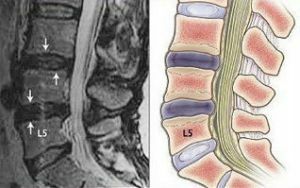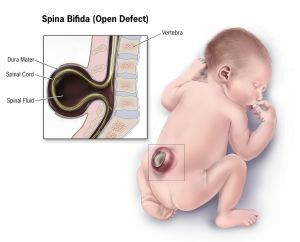 The spine is a very fragile organ, prone to many pathologies. One of them was called antelistesis. Less often in medical practice is used the term anterolistez.
The spine is a very fragile organ, prone to many pathologies. One of them was called antelistesis. Less often in medical practice is used the term anterolistez.
The main sign of the ailment is the displacement of the vertebra forward relative to the one below it. In the side view, it will look like an impending visor.
Such deformation refers to cases when the section is displaced entirely, there is no rupture in the arch. This is the main distinguishing feature of antelisthesis from spondylolisthesis.
Painful changes in the structure of the spine with this diagnosis lead to a number of functional disorders.
This degenerative condition is associated with osteochondrosis in the lumbar region, it is localized, as a rule, on the tiers of the 3rd( L3), 4th( L4), 5th( L5) vertebrae.
The level L4 can change the most - up to 10 mm. The above are displaced less, and L5 is firmly connected to the sacrum. The shape of the intervertebral disc is distorted in these cases.
Antenitis of the vertebra may cause an increase in spinal deformity with uncontrolled loads, damage tissues and muscles in this zone, lead to rupture of ligaments.
Contents of the article
- Causes and classification of the disease
- Symptoms of the
- pathology
- features of the anterelyst l5, L4 and L3 of the vertebra
Causes and classification of the disease
The origin of the pathology is well studied and the physicians distinguish the followingcauses as basic: 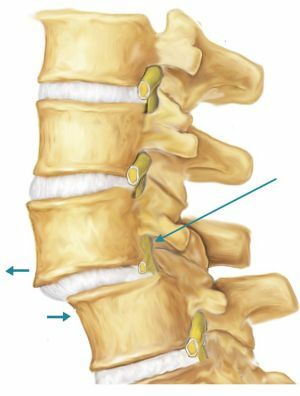
- congenital disorders of the joints and spines of the spinal column;
- result of injuries;
- development of inflammation and oncological processes in the spine;
- arthrosis of vertebral segments;
- lifting of large scales, exorbitant physical loads;
- muscle convulsions;
- prolonged static body stay;
- fast temperature drop.
Pathology can occur due to stenosis of the spinal canal due to aging of the body. Birth injuries are considered statistically significant causes. There are cases when the ailment was the result of unsuccessful surgical intervention.
Based on the etiology and causes that acted as a trigger for the appearance and development of defects in anterolisthesis, they are classified.
- Congenital .Usually fixed for level L5, is rare.
- Traumatic ( ischemic).This type is characterized by durability and a stable curvature of the back.
- Degenerative .It is noted in the elderly.
- Surgical .It is connected with a mistake of doctors.
Symptomatology of the pathology
The ailment develops asymptomatically for some time, at an early stage it is determined only when another disease is diagnosed. This leads to a late appeal to specialists, including, when already affected by the back of the brain.
Basically, patients complain that they have:
- the sensitivity of the limbs is impaired;
- is not controlled by defecation and urination;
- intolerable pain when trying to change the pose;
- obstructed movements of the hands and feet until paralysis.
Along with common signs, the disease has specific manifestations with lesions of different vertebrae.
Features of anterelisis l5, L4 and L3 of the
vertebrae. When the vertebrae of the L5 vertebrae are significantly compressed, the spinal cord is marked. This leads to involuntary urination and feces, inability to change position, stiffness of muscles.
The patient experiences severe pain, requiring the use of analgesics. This is the most serious complication of the spinal cord with this diagnosis.
L4 protrusion of the vertebra causes hard to bear pain when emptying the bladder and relieving the intestines. To a typical symptom include spasms of the muscles of the buttocks and accompanying unpleasant sensations in the perineum.
Painful muscle contractions in the lumbar region are characteristic of L3 vertebral antelisthesis. This leads to difficulty urinating, the act of defecation, women have problems with childbearing.
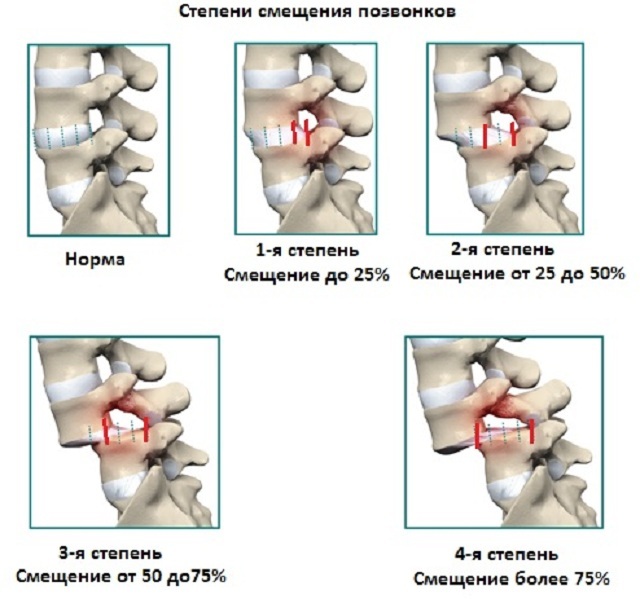
Methods for diagnosis of the disease
It is of fundamental importance to conduct a qualitative, correct diagnosis of anthistyle of the vertebral body. The disease in its development passes through several stages, depending on the correct determination of their methods of treatment.
Quantitative characteristics are used to determine the phase of the disease. The degree of deformation calculated as the ratio of the length of the displacement to the diameter of the vertebra, expressed as a percentage of
is estimated. The initial degree refers to damage to 25%.The following stages stand out as 50% deformations and 75.
To determine the state of affairs, radiographic studies are sufficient. If it is impossible to get a contrast image of the patient, send it to magnetic resonance imaging.
Therapy of a violation of
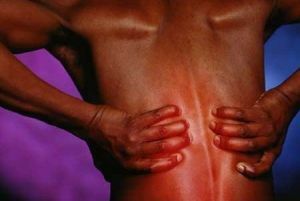 Based on the definition of the depth of the lesion, the doctor prescribes conservative or surgical methods of treatment.
Based on the definition of the depth of the lesion, the doctor prescribes conservative or surgical methods of treatment.
With conservative therapy, treatment tactics are aimed at removing pain syndrome and excluding provoking factors. First of all, the patient should not allow physical exertion on the spine.
It is prescribed to wear a medical corset, course treatment with pain medication and anti-inflammatory drugs. The latter are applied in tablet form and in the form of compresses, impregnated with the necessary ointments.
Drugs are prescribed for muscle relaxation, eliminating convulsions in combination with class B vitamins, new-kaic blockades are made.
In addition, physiotherapeutic procedures are carried out to strengthen the abdominal press, the patient attends therapeutic massage sessions. To maintain the results of the main treatment, special exercises are prescribed, a visit to the pool is recommended.
After the course of conservative treatment, time for rehabilitation is needed. At this time it is useful to stay in a sanatorium-resort institution, where conditions are created to consolidate the results.
It should be realized that all these methods provide assistance only at an early stage of the ailment and eliminate its symptoms without affecting the cause.
If the positive dynamics can not be achieved, the patient does not experience any relief, and surgical treatment is performed. This usually occurs when the offset is more than 50%.
During surgery, the surgeon fixes the vertebrae in the correct position. In complex cases, implants are used to restore the natural size of the vertebrae. The operation not only eliminates the signs of the disease, but also restores the crippled spine axis.
If you feel unwell, visit a doctor without delay.
Following these rules, you can avoid severe, difficult-to-treat complications that can lead to disability.
Possible complications of
Antelisthesis of the spine can be the cause of severe consequences, which in themselves are serious ailments. Of these, the most common:
- spontaneous urination and defecation;
- insufficient sensitivity of the lower limbs;
- muscle paralysis;
- pelvic pain;
- curvature of the spine;
- difficulty with digestion.
Prophylaxis of anterior displacement of vertebrae
Prevention is associated with general measures to prevent spine diseases. Physical training,  swimming, massage are necessary.
swimming, massage are necessary.
Change the position of the body more often. Do not lift heavy weights. Periodically pass the x-ray control of the spinal column and lumbar zone.
Thus:
- antelisthesis is the displacement of the vertebra forward relative to the location below;
- affliction is localized in L3, L4, L5 vertebrae;
- disease can bring to severe pathologies;
- is diagnosed with fluoroscopy;
- distinguishes 4 stages of the disease, depending on the deformation;
- conservative treatment helps with small lesions;
- in surgical cases perform a surgical procedure.


